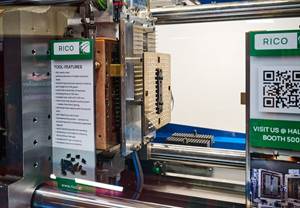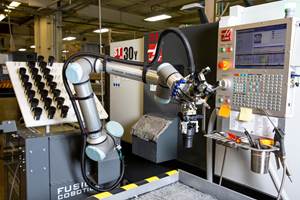Lights Out, Pristine Production In
The numbers beggar belief and the business belies description—Medical Components of America has six full-time employees, six injection machines and lights-out production that’s gone five years without shipping a bad part or missing a delivery.
Pretty soon after beginning to fill out Plastics Technology’s Top Shops benchmarking questionnaire, Chris Morton pushed back from his computer.
“When I started through the survey metrics, there were some I wouldn’t share, and if I did share some of them, you’d think I was lying,” Morton says. He is the founder and CEO of Medical Components of America , an injection molding company he started from scratch with every aspect of its business built with singular purpose and intention.
Morton has spent four decades in plastics and injection molding, starting out in his father’s tool shop when he was in college, with stints running smaller companies along the way and time heading up much larger operations. He spent a decade at the global contract manufacturer Flex, leaving as the v.p. of Global Mechanicals; and before starting Medical Components of America, he was COO for Medplast.
During those years, Morton developed a vision of the kind of medical molding operation he thought could be most successful. After leaving Medplast, he took one year to fine-tune that plan back in 2013, and then he broke ground on his current company at a 5-acre greenfield site in Seguin, Texas, approximately 40 miles northeast of San Antonio. Parts began shipping in January 2014, and his concept of what a molding plant could be, incubated over decades, finally took physical shape for Morton.
What emerged is a supplier of medical components that has gone five years without shipping a bad part or missing a delivery that will achieve $3.6 million in sales in 2020 with 10 total employees (six full time and four part time) and six injection molding machines. Many of the 540 million components the company has molded during its five-year streak without bad parts or missed deliveries were created without human intervention, since the facility runs 80-100 hours a week fully lights-out without a person in the building.
Currently covering 10,200 ft2, Medical Components of America has already designed and engineered a 7500-ft2 expansion it will undertake as growth dictates. All parts are molded in an ISO Class 8 clean room, and the company has standardized on all-electric Sumitomo (SHI) Demag injection machines, which range in clamp force from 75 to 200 tons. In auxiliaries and robotics, Medical Components of America is a 100% Wittmann Battenfeld shop.
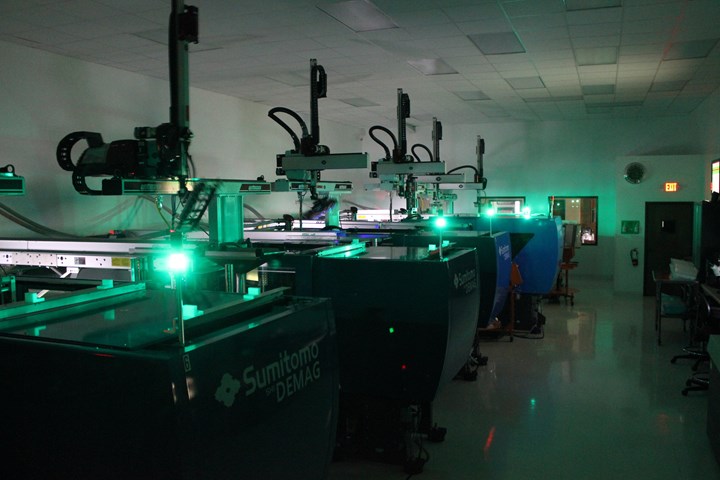
For 80 to 100 hr/week, Medical Components of America runs with no one in the building.
Defying Description
“I’m not sure how to describe the company,” Morton says. “I have a hard time getting people to fully grasp what we are.” The simple facts that this is a medical molder running high-volume, small-bulk-pack parts are recognizable aspects of the company, while how it does that is less familiar. “There are some things about us people can grasp because they’re not uncommon, but our business model itself is quite different.”
Over four decades in molding, observing operations he was responsible for and those of competitors, Morton identified a common theme, especially among custom molders: Too many shops try to do and be everything for their customers.
“I’ve run 100 or more custom molder divisions and groups in my career,” Morton says, “and they all kind of look the same and smell the same—same function, same department—some are bigger and some are smaller, and there are different groups and different companies, but they all kind of look the same, and they all kind of do the same thing, and they’re not all bringing value to key customers.”
In a presentation he gives to prospective customers, Morton lays out his company’s vision. “Our business model is not to build a manufacturing process that will do many things, but to build one to be the ‘best in class’ within this product space, and that is to manufacture medical automated parts in volume at the total lowest possible cost, while meeting the highest possible quality levels.”
This process focus derives in part from the company’s ISO 13485 certification and its concept of “product realization planning” with careful definition of product attributes, such as quality control, and the various processes used to arrive at the product. Says Morton, “Once you develop that process realization, you can build that organization and everything you need to do around that process, so anything that’s not required shouldn’t be there.” The laser focus on pursuing only activities that add value manifests itself in two key areas at Medical Components of America: quality and business process outsourcing.
“Our business model is not to build a manufacturing process that will do many things, but to build one to be the ‘best in class.’”
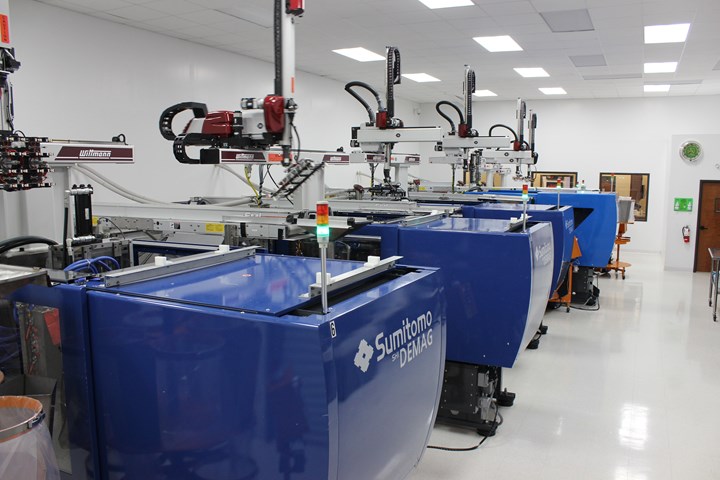
Medical Components of America runs an ISO Class 8 clean room featuring six all-electric Sumitomo (SHI) Demag injection molding machines and Wittmann Battenfeld robotics and auxiliaries.
Quality and Manufacturing Combined
The relationship between the production floor and the quality department at many molders can be antagonistic, since their functions are often at cross purposes. Morton, describing some quality departments as being “the police force of the corporation,” is more direct about the relationship. “There’s a hatred,” between quality and production, Morton says. “It’s a war.”
To avoid open conflict at Medical Components of America, Morton has installed what he calls “manufacturing quality” where the people that are manufacturing the product are also in charge of the product’s quality. “It sounds like a cliché from the ’80s and the total quality era, where everybody would say, ‘From the receptionist on down we’re into the quality game,’” Morton says. “We don’t have incoming auditors; we don’t have quality assurance; we don’t have quality control.”
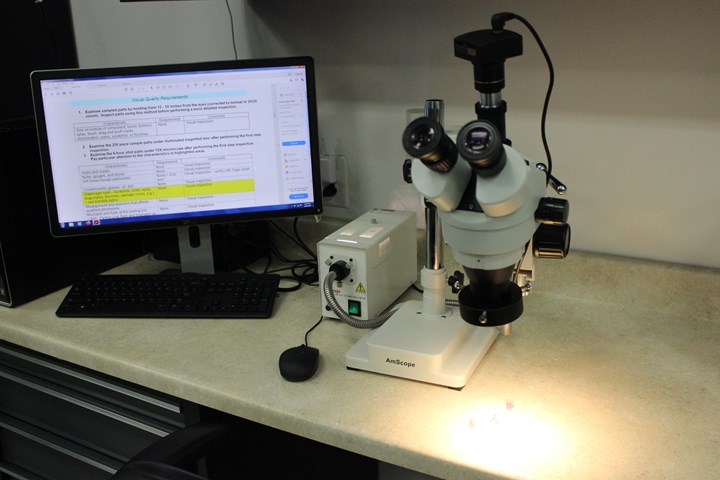
Medical Compoents of America can perform visual inspection with controlled lighting, magnification and video.
Unlike some plants, where the quality department could can tag parts, stop them from shipping or stop processes from being approved and started, Morton has empowered its production staff. “They have complete authority to shut the machine down,” Morton explains. “They have complete authority to do what they need to do inside the scope of the quality system. The person who’s making the part is deciding whether it’s good or not.” This way, Morton says the company’s quality system is merged into its process realization.
“Each step gets checked,” Morton says, “each step of the process, from incoming to outgoing shipment, is verified and checked in the normal way, but it’s not done by separate teams policing each other.” The results: online scrap numbers are below 1%—“they’re probably below a half a percent if I really wanted to dig into it,” Morton says—while the defective parts per million (DPPM) are zero across all product lines and on-time delivery is 100%.
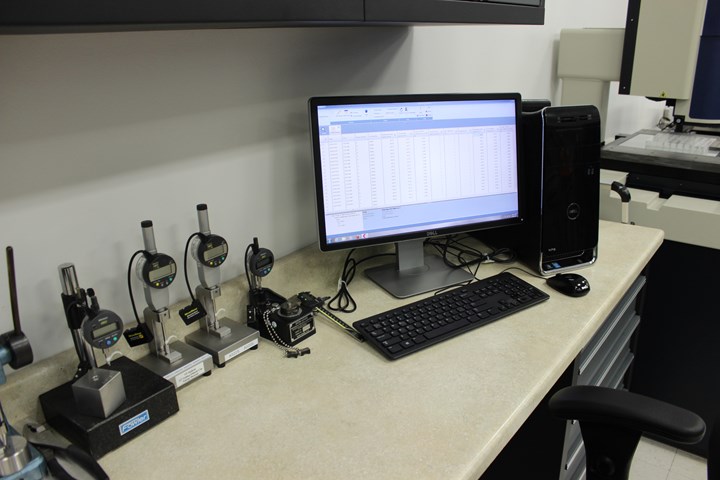
Medical Components of America utilizes wireless gauging for on-line production process SQC.
Outsourcing the Unessential
Another key differentiator for Medical Components of America is its use of business process outsourcing. Everything from accounting and human resources to upkeep of major systems like chiller system loops, HVAC, pest control and more is outsourced. “Outsourcing is incredibly efficient, and it frees up the key people to do the things they really need to do, and that’s to add value to the product,” Morton explains. “The outsourced vendor is better at the job than somebody who only does it once in a while; they’re incredibly efficient,” Morton says. “They have all the equipment, and the know-how to do it right.”
The company has trained employees to do preventive maintenance, but it doesn’t employ specific maintenance staff. “So many times I’ve worked in plants and watched a maintenance guy make it worse rather than better because he just didn’t understand what he was doing.”
Computer Integration Powers Lights Out Operation
The incredibly lean operations that allow Medical Components of America to be exceptionally competitive on price are made possible by what Morton calls computer-integrated manufacturing, which in turn makes lights-out operations feasible. Out of the 168 total weekly production hours, the molder runs 80 to 100 hr without people.
Fully paperless, Medical Components of America collects all data electronically, with most of it gathered automatically, covering all the plant’s systems—air, water, clean room and more. “All of the big systems are all sensored and controlled, so if it’s 2:00 in the morning on a Saturday and something goes awry, it rings our phone and says, ‘I’m broken,’ tells me what’s broken and takes action if needed.”
This level of autonomy was achieved over time, according to Morton. “There’s an enormous amount of things that you put in place in order to achieve lights out. You don’t just go, ‘Oh, I’m really good—I’m going to leave today.’ You start out by going four hours without somebody; then you go eight; then you do 24; then you do two days, and you go, ‘Well, this is OK.’”
“There’s an enormous amount of things that you put in place in order to achieve lights out.”
Morton built his first computer-integrated manufacturing system in 1989. The system at Medical Components of America was also built in-house. “We were able to design our own system, then we put the computer-integrated manufacturing around it. So when you start with an incoming shipment, the first thing you do is to pull up the system.”
At dinner with a potential new customer last November, Morton was once again struggling to describe his company. “The customer said, ‘So, tell me about the plant,’ and I said, ‘Why don’t I just show you.’” Removing his phone from his pocket, Morton was able to show the customer his facility, using feeds from multiple cameras running production with no one in the building. “I’m flipping through the screens—‘Here’s the back area; here’s the molding room from this side; here’s the molding room from that side’—and he’s like, ‘That’s unbelievable.’”
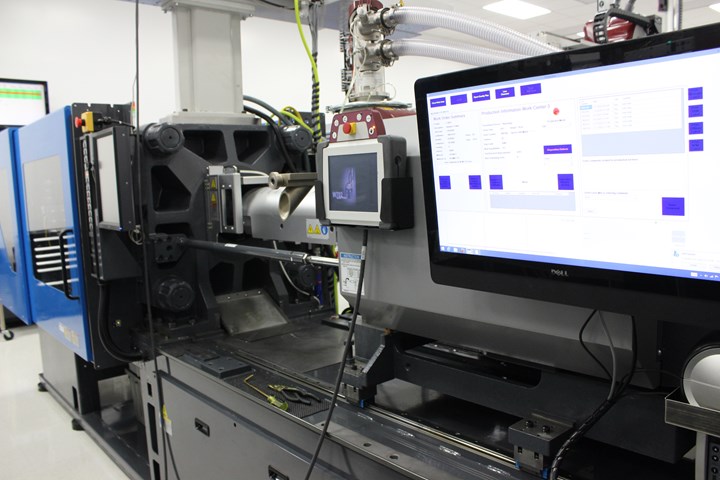
Medical Components of America built its own computer-integrated manufacturing software that ties into all of the plants systems.
Related Content
Mold Monitor Adds Wireless Connectivity
NPE2024: Progressive’s CVe OnDemand software now offers wireless connectivity.
Read MoreLSR Advances in Dispensing, Tooling and Automation
At Fakuma 2023, Sumitomo (SHI) Demag’s LSR injection molding machines showcased advances from itself and partners Reinhardt-Technik, Rico and Sepro.
Read MoreFour Industry 4.0 Tech Adoption Insights from Indiana Plastics Manufacturers
As more plastics manufacturers step into the Fourth Industrial Revolution, insights have emerged about how best to approach the digital transformation journey.
Read MoreWhat to Look for in High-Speed Automation for Pipette Production
Automation is a must-have for molders of pipettes. Make sure your supplier provides assurances of throughput and output, manpower utilization, floor space consumption and payback period.
Read MoreRead Next
People 4.0 – How to Get Buy-In from Your Staff for Industry 4.0 Systems
Implementing a production monitoring system as the foundation of a ‘smart factory’ is about integrating people with new technology as much as it is about integrating machines and computers. Here are tips from a company that has gone through the process.
Read MoreBeyond Prototypes: 8 Ways the Plastics Industry Is Using 3D Printing
Plastics processors are finding applications for 3D printing around the plant and across the supply chain. Here are 8 examples to look for at NPE2024.
Read More








